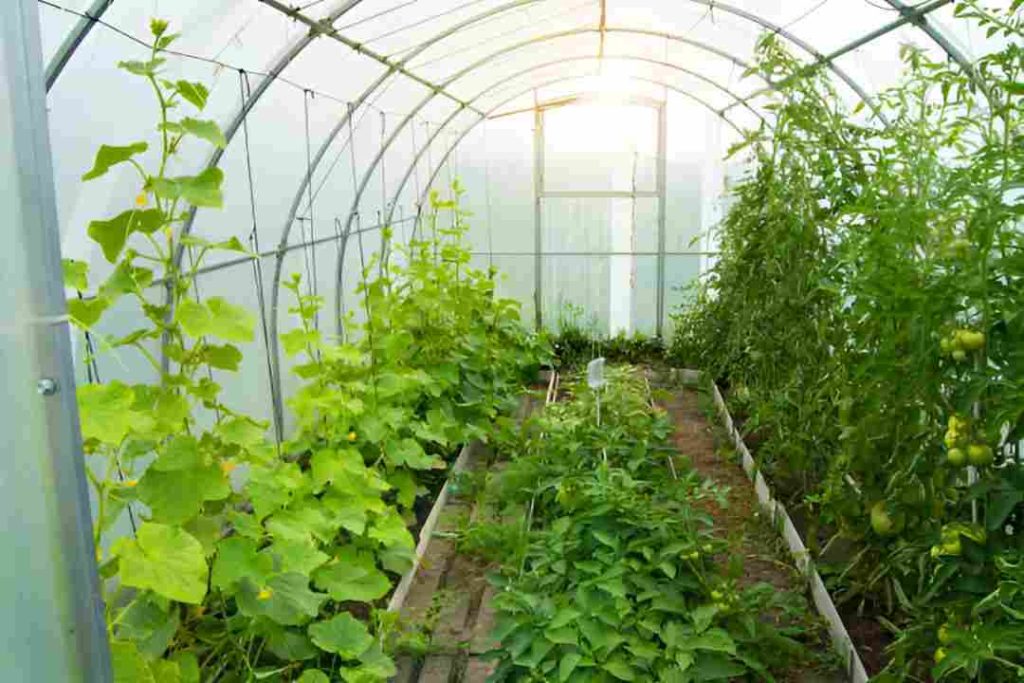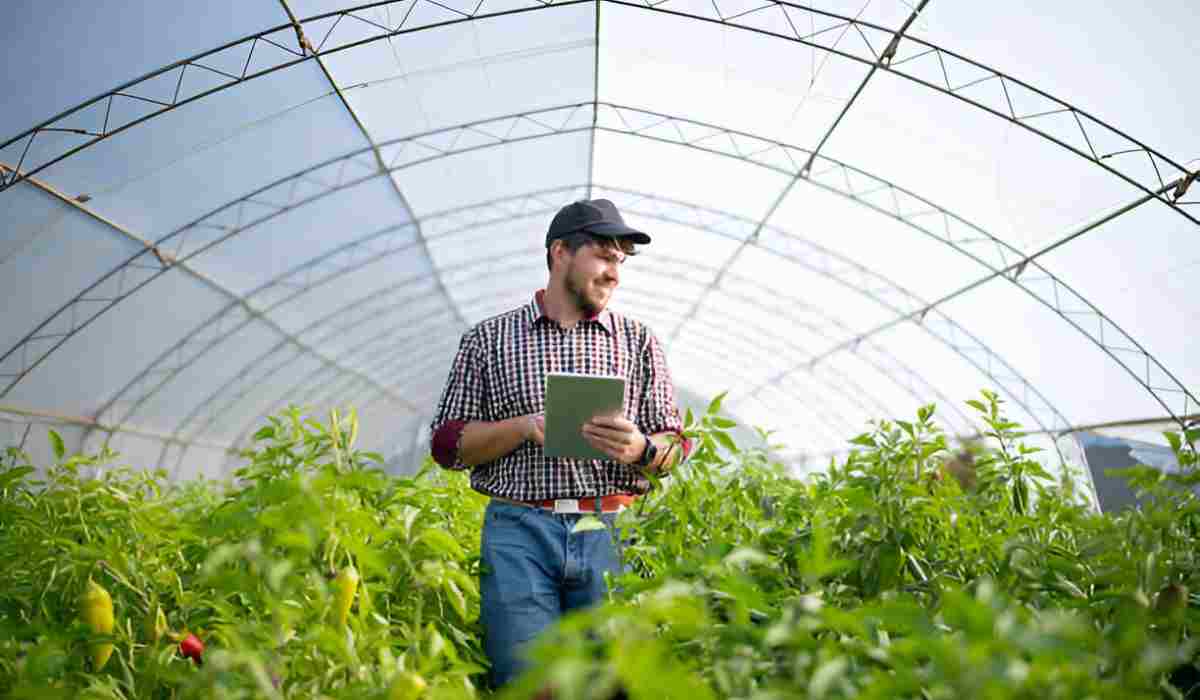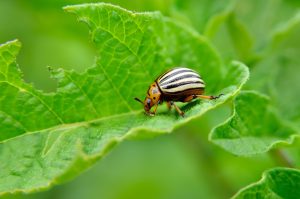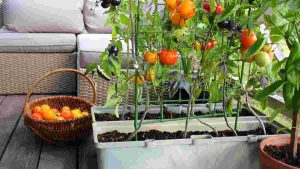What is Greenhouse Gardening?
Greenhouse gardening involves growing vegetables, flowers, and exotic plants in a controlled environment. It supports year-round growing, seed germination, indoor seed starting, and season extension. A greenhouse helps manage ventilation, insulation, humidity, and heat retention to meet plant light requirements and protect crops during winter gardening.
What Are the Benefits of Greenhouse Gardening?
Greenhouse gardening offers extended growing seasons, the ability to grow year-round, and a controlled environment that protects plants from pests, frost, and extreme weather. It also increases yields, improves transplant success, controls humidity, and provides fresh produce year-round. Plus, it supports relaxation, family bonding, and holistic health benefits.
For more ways to grow food year-round, check out our vegetable gardening guide.
Types of Greenhouses
Greenhouses come in many types based on structure, material, and purpose. Common structures include Lean-to, Even-span, Uneven-span, Ridge and furrow, Sawtooth, Gable, Tunnel, and Gothic arch. A Quonset greenhouse uses a curved shape, while an A-frame has a sharp roof. Raised dome, Skillion, and Flat arch are also popular designs. Some greenhouses, like Pit greenhouses and Chinese solar greenhouses, use special methods to save energy.
Materials include glass, plastic films, and rigid panels. Frames may be wooden framed, pipe framed, or truss framed. Detached or freestanding greenhouses stand alone. You can also use a window-mounted or wall garden for small spaces. Hydroponic greenhouses grow plants in water. People also use hoop houses, round or hexagonal shapes, and Dutch Light styles.
To explore more styles, visit our guide on different types of gardens.
Choose the type that fits your climate, space, and goals.
How Should You Set Up and Design a Greenhouse?
A good greenhouse setup starts with a smart layout. Begin with clear greenhouse plans that match your space and needs. Use greenhouse rows and aisles to organize your plants. Add benches for easy access and better workflow. Try vertical planting to save space and grow more crops. For inspiration, explore vegetable garden layout or Stardew Valley layout.
Create a cozy design with romantic seating or simple decoration. Add a sprinkler layout and open windows for better water and air flow. Use cold frames to protect young plants. Plant fruit trees or ancient fruit in a corner. You can also grow herbs and set up kegs for special projects. Combine planting layout inspiration with greenhouse interiors to get maximum yield. This works for DIY greenhouses or commercial greenhouse operations.
If you are working in a small area, check out our vegetables container gardens for helpful ideas.
How Can You Build a Greenhouse?
To build a greenhouse, start by choosing the right size and location. Many people create DIY greenhouses using basic tools and materials. You can build a 10×12 greenhouse or even a high-tunnel greenhouse if you need more space. A cattle panel greenhouse is strong and easy to shape. If you want something creative, try a greenhouse with old windows.
First, build the foundation and frame. Use solid walls for better insulation. You can build a greenhouse from scratch or use local supplies to build without a kit. In colder areas like Zone 5b, build a year-round heated greenhouse. Add a potting bench for planting and storage. For fun, explore greenhouse designs in games like Sims, RimWorld, or Starfield. Lowe’s also offers guides to build a greenhouse.
What Are Some DIY Greenhouse Plans?
Many people start with DIY greenhouse plans to grow plants at home. You can choose from 84 free DIY greenhouse plans for different sizes and styles. If you have no building skills, try a DIY greenhouse without experience. Some popular ideas include a timber frame greenhouse, greenhouse garden shed, or a greenhouse from old windows.
You can build a DIY window greenhouse or create a DIY cattle panel greenhouse. Build a strong base using a DIY greenhouse foundation and wooden frame. Add greenhouse staging from pallets for easy plant storage. Try an 8×12 greenhouse with a raised garden bed or build a year-round heated greenhouse for cold weather. For design, try an octagonal greenhouse, lean-to greenhouse, or dome greenhouse. Use clear polycarbonate, cold frames, or a brick foundation for better light. This works for hobby or four-season gardening.
What Are Some Budget-Friendly Greenhouse Ideas?
You can build a budget greenhouse using simple materials and easy designs. Try a DIY greenhouse plan that uses recycled wood or plastic. A greenhouse from old windows saves money and adds charm. Use a DIY cattle panel greenhouse if you need a low-cost structure that still works well.
For small gardens, build a lean-to greenhouse or a DIY window greenhouse. Use clear plastic instead of glass to cut costs. Make a greenhouse foundation from pallets or bricks you already have. Try greenhouse staging from pallets for plant storage. Build a timber frame greenhouse or a greenhouse garden shed if you want a bigger project. Cold frames help start seeds early and cost very little. A passive solar greenhouse uses sunlight and reduces heating costs. These ideas help you grow plants without spending too much.
What Are the Best Materials for Building a Greenhouse?
To build a strong greenhouse, use materials that last long and support plant growth. Glass gives clear light but breaks easily. Polycarbonate and rigid polycarbonate panels are stronger and keep heat better. Acrylic and ETFE are also clear and resist damage. Polyethylene and clear plastic sheets cost less and work well for small greenhouses.
Fiberglass reinforced plastic lasts long and handles weather changes. For frames, use aluminum or galvanized steel for strength. Wood like redwood, cypress, or timber adds natural beauty. Bamboo or PVC plastic piping works well for lightweight DIY designs. Use metal wire for extra support. Polyester can cover temporary greenhouses. Choose the best material based on your budget, climate, and how often you use the greenhouse. These materials help protect plants and improve growing results.
What Is the Difference Between Glass, Polycarbonate, and Plastic for Greenhouse Gardening?
The main difference between glass, polycarbonate, and plastic for greenhouse gardening is durability, insulation, and cost. Glass offers clear visibility and lasts long but breaks easily. Polycarbonate, especially twinwall or triple-walled polycarbonate, gives better insulation and high impact resistance. Toughened glass is stronger than regular glass.
Plastic sheeting like polyethylene or plastic film is the cheapest but degrades faster. Corrugated polycarbonate and rigid plastic balance strength and light diffusion.
How Does Hydroponics Work in Greenhouse Gardening?
You can grow plants like leaf lettuce, tomatoes, peppers, and cucumbers in greenhouses using hydroponics for faster growth and better yield. Use the Nutrient Film Technique (NFT) or Dutch/Beto Bucket System to deliver water and nutrients directly to the roots.

Install a drip irrigation system or hydroponic rail system with professional hydroponic channels to save space and increase efficiency. Set up vertical greenhouses to grow strawberries, celery, and watercress using substrate plates. Choose a closed hydroponic system to recycle water and reduce waste. Use an IoT-based control system to monitor temperature, humidity, and nutrient levels. You can also grow houseplants hydroponically for indoor use.
How Can You Optimize Sustainability in a Greenhouse Garden?
Improve sustainability in a greenhouse garden by using a solar greenhouse and photovoltaic system (PV) to generate clean energy. Install a ground-source heat pump (GSHP) to reduce heating costs. Use AI-driven crop management with machine learning algorithms, deep learning, and gradient boosting tree to optimize plant care.
Apply the adaptive annealing genetic algorithm and sparrow search algorithm for smart resource use. Predict weather with an environmental prediction model. Use trapezoidal demand management and efficient energy management to control power use. Adopt conservation tillage and grow with help from Trichoderma spp. and Bacillus spp. to improve soil and plant health.

Design a sustainable greenhouse with rooftop greenhouses to save space. Apply INDIGOO diet optimization to match crop needs and reduce greenhouse gas emissions through better evapotranspiration response and fertilization optimization.
Gardening in the Global Greenhouse (UK Study)
Dr. Richard Bisgrove and Dr. Peter Hadley from the UK wrote a helpful report called Gardening in the Global Greenhouse. This book explains how climate change affects gardens, soil, and plant growth in the UK. It covers many topics like photosynthesis, water use (evapo-transpiration), and how garden design needs to change over time.
You can read the full report here:
Gardening in the Global Greenhouse – Plants & Soil Adaptation (UK PDF)
Conclusion
Greenhouse gardening makes it easier to grow vegetables and other plants all year, even in cold or hot climates. It helps protect your plants, increase harvests, and save money with DIY or budget ideas. Whether you are starting with small projects or planning a large greenhouse, you can enjoy fresh food, healthy plants, and a relaxing hobby in your own space. Use the right setup, materials, and methods to make your greenhouse garden successful.





